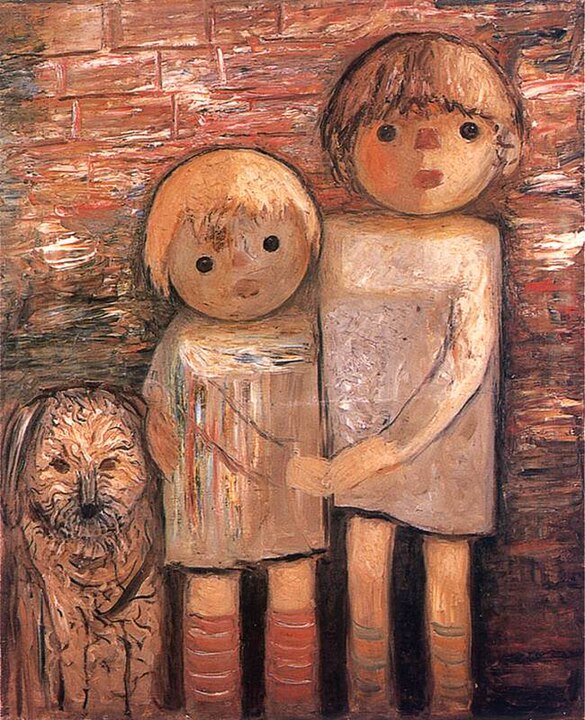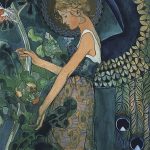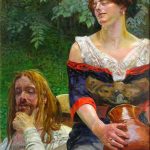
Tadeusz Makowski (1882–1932) was a Polish painter known for his unique blend of Post-Impressionism, Cubism, and Expressionism, which he infused with a distinctively Polish sensibility. Born in Oświęcim, Poland, Makowski’s journey into the arts led him across Europe, ultimately shaping his eclectic and evocative style. His work, characterized by a deep humanism and a fascination with everyday life, stands as a testament to his innovative approach to modern art.

Makowski’s artistic journey began in Kraków, Poland, where he studied at the Academy of Fine Arts. Seeking broader horizons, he moved to Munich and later to Paris, which, at the turn of the 20th century, was the epicenter of the avant-garde.

In Paris, Makowski immersed himself in the vibrant artistic community, drawing influence from the works of Cézanne, the Cubists, and the Orphists. However, it was his Polish heritage and the simplicity of rural life that ultimately grounded his aesthetic, infusing his work with a sense of warmth and nostalgia.

Makowski’s paintings are distinguished by their textured surfaces, sophisticated use of color, and the incorporation of folk motifs, which reflect his interest in the Polish peasant culture. His subjects often include scenes from everyday life, portraits of children, and landscapes, all rendered with a tender yet analytical eye. Makowski’s figures, with their stylized, simplified forms, convey a sense of universal humanity, bridging the gap between traditional Polish art and modernist trends.

One of the hallmarks of Makowski’s style is his ability to evoke mood and atmosphere through color and composition. His palette, often subdued, is punctuated by bursts of vibrant color, highlighting the emotional undercurrents of his scenes. This careful balance between color and form allows Makowski to capture the essence of his subjects, creating works that are both intimate and universal.

Despite his integration into the Parisian art scene, Makowski remained deeply connected to his Polish roots. This connection is evident in his frequent depictions of children and peasants, imbued with a sense of dignity and grace. These figures, often set against the backdrop of the Polish countryside or domestic interiors, serve as a conduit for Makowski’s exploration of themes such as innocence, spirituality, and the passage of time.

Throughout his career, Makowski experimented with various techniques and styles, from the geometric abstraction of Cubism to the expressive brushwork of Post-Impressionism. However, his work never fully abandoned the representational, maintaining a narrative quality that resonates with viewers. This narrative element, combined with his distinctive stylization, sets Makowski apart from his contemporaries, making his oeuvre a unique contribution to the modernist movement.

Makowski’s contributions to Polish and European art were cut short by his untimely death in 1932. Despite his relatively brief career, his work left a lasting impact, celebrated for its originality, depth, and the compassionate gaze it casts on the human condition. Today, Makowski’s paintings are held in high esteem and featured in museums and private collections across Poland and internationally.

In examining Tadeusz Makowski’s legacy, it becomes clear that his significance lies not only in his stylistic innovations but also in his ability to weave together the threads of tradition and modernity. His paintings serve as a bridge between the past and the present, capturing the essence of Polish culture while engaging with the broader currents of European modernism. Makowski’s art continues to inspire and captivate, offering a window into the soul of a nation and the universal experiences of humanity.





